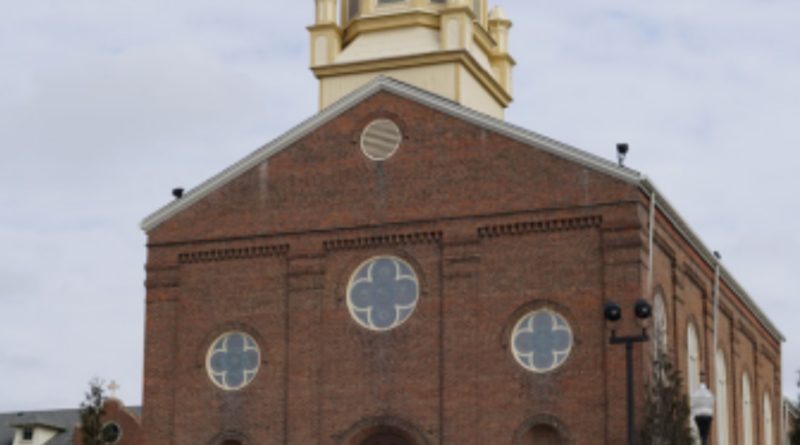Shootings on college campuses: What happens next?
Photo of the Chapel of the Immaculate Conception on UD’s campus. Photo by Zach Merz, contributing photographer.
Lucy Waskiewicz | Contributing Writer
In the last 16 years, 72 lives have been claimed by mass shootings on the campuses of American colleges and universities.
On Feb. 13, three students were killed and five were wounded on Michigan State University’s campus. Exactly three months before, on Nov. 13, 2022, a shooter opened fire on a bus returning to campus at the University of Virginia, killing three students and injuring two others.
The UVA shooting occurred 15 years after the deadliest school shooting in American history took place only two hours away on the campus of Virginia Tech, where a gunman killed 32 people and wounded 23.
While these shootings garner mass publicity in the hours following their occurrence, media coverage and public attention often peters out before school administration is forced to answer the heavy question— what happens next?
Much post-shooting media coverage centers around gun control on a federal level, often too little or no outcome due to partisan clashing. However, on-campus policymaking in response to instances of gun violence generally takes a different approach, focusing instead on threat prevention, building security and emergency alert capabilities.
The campus and state response to the 2007 Virginia Tech shooting has served as a national model for security measure implementation. Following the shooting, the state of Virginia required all colleges to form behavioral threat assessment teams, which were allowed to gather all available health and criminal information for any suspicious persons.
A new bill, introduced after the University of Virginia shooting, seeks to strengthen these teams by requiring they collect information on any persons having posed an “articulable and significant threat” and notify law enforcement within 24 hours.
“We want to do it as quickly as possible,” Virginia State Senator Steve Newman said. “Without a time frame, we just don’t think there’s going to be a priority.”
The emphasis on speed and requirement in the new bill is not arbitrary; the suspected UVA shooter was being investigated by the university’s threat assessment team at the time of the shooting, after another student reported the suspect said he owned a gun.
However, despite discovery of the suspect’s failure to disclose a previous weapons-related misdemeanor to the university, the investigation produced no results before the suspect carried out the shooting.
Other security measures, like campus-wide emergency notification systems and increased building security via locks and surveillance cameras, have been at the forefront of college gun violence prevention following the Virginia Tech shooting.
These kinds of preventative measures are currently being called for on the campus of Michigan State University. According to the university’s student newspaper, The State News, students are calling for additional security on campus, including locks on classroom doors, increased police presence and the requirement of MSU ID cards to enter academic buildings.
A student town hall was held at MSU to voice concerns and ideas regarding the shooting.
“My best friend here went to Oxford High School,” MSU freshman Melinda Bronk said at the town hall. “She not only lived through one school shooting, but she lived through two and was expected to go to class on the Monday after, the week after the situation. It’s completely unacceptable.”
The University of Dayton is no stranger to the national conversation about campus shootings. Just five days before the University of Virginia shooting, on November 7, a sophomore student at UD posted a threat to “shoot up this school” on the anonymous social media app Yik Yak.
The UD administration and Public Safety faced criticism for sending out a notification to students via email at 12:06 p.m. — an hour after the threat was posted online. Information was released in a joint statement with the FBI Cincinnati Field Office the next day, in which an “increase of hoax threats” was cited behind the delay.
“These threats can have significant impacts on the community and are treated seriously by law enforcement and first responders,” the statement said.
For more campus news, like Flyer News on Facebook and follow us on Twitter (@FlyerNews) and Instagram (@flyernews).

